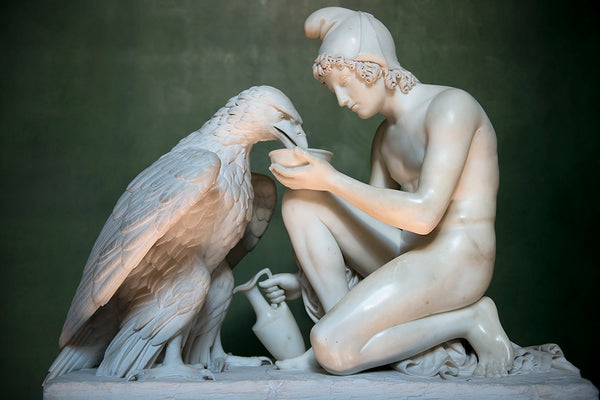Your Cart is Empty
35% OFF SALE ~ NO CODE NEEDED
Menu
-
- Tapestries
- Kaleidoscopes
- Our Artists
- Adam One
- Amanda Sage
- Andreilien
- Android Jones
- APEX
- Art of One
- Asirios
- Astral Visions
- Austin Mackereth
- Autumn Skye
- Benedigital
- BL Visuals
- Blake Drezet Art
- Boris Pelcer
- Burgandy Viscosi
- Chris Dyer Positive Creations
- Chris Miele
- Collin Salazar
- Danny Stephens
- Dela
- Dima Yastronaut
- Emily Kell
- Erica Robin
- Free Rein
- Gabriel Welch
- Giohorus
- Gwen A.P.
- I Am Electric
- Jack Laroux
- Johnathan Singer
- Kai Wilder
- Karen Schaefer
- Kirsten Zirngibl
- Light Wizard
- Logan Walden
- Luke Brown
- Marcelo Germana
- Mark Henson
- Martina Hoffmann
- Masha Falkov
- Mélissande Monette
- Moksha Marquardt
- Mr. Melty
- Mugwort
- Natural Warp
- Olivia Curry
- Paul Mez
- Phil Lewis
- Psiloteric Visions
- Psybe Industries
- PsytScene
- Robyn Chance
- Shane Myers
- Sylvia Ritter
- Silvio Vieira
- Simon Haiduk
- Soltice Son
- Steady Lifted
- Swartz Brothers Art
- Sylance
- TAS Visuals
- Totemical
- Trax (Desert Dwellers)
- Tyler Gentry
- Victor Olenev
- Wrenna Monet
- Info
-
- Text 631-743-0278
- Login
-
United States (USD $)

35% OFF SALE ~ NO CODE NEEDED
Add description, images, menus and links to your mega menu
A column with no settings can be used as a spacer
Link to your collections, sales and even external links
Add up to five columns
Add description, images, menus and links to your mega menu
A column with no settings can be used as a spacer
Link to your collections, sales and even external links
Add up to five columns
Add description, images, menus and links to your mega menu
A column with no settings can be used as a spacer
Link to your collections, sales and even external links
Add up to five columns
Add description, images, menus and links to your mega menu
A column with no settings can be used as a spacer
Link to your collections, sales and even external links
Add up to five columns
Add description, images, menus and links to your mega menu
A column with no settings can be used as a spacer
Link to your collections, sales and even external links
Add up to five columns
Add description, images, menus and links to your mega menu
A column with no settings can be used as a spacer
Link to your collections, sales and even external links
Add up to five columns
Add description, images, menus and links to your mega menu
A column with no settings can be used as a spacer
Link to your collections, sales and even external links
Add up to five columns
Add description, images, menus and links to your mega menu
A column with no settings can be used as a spacer
Link to your collections, sales and even external links
Add up to five columns

Happy Birthday Bertel Thorvaldsen (European Neoclassical Artist)
November 13, 2019 3 min read
Seeking to restore the splendour of the ancient days, the Neoclassicism movement was one of the dominant cultural movements in the 18th and 19th century, competing against romanticism. Coinciding with the Age of Enlightenment, this movement saw the revival of the aesthetic values of the Antiquity Era, and an increased interest in that era. Artists at this age took inspiration from the ancient structures, contours, and colours of Ancient Greece and Ancient Rome, and then recreate them in their own images. Bertel Thorvaldsten, a celebrated Swedish sculptor, was one of the towering giants of the Neoclassicism movement. In fact, he was widely considered the most important sculptor of the movement as a whole.
Born to a family of Icelandic wood-carvers who had migrated to Sweden earlier, Thorvaldsten spent his childhood mostly in poverty, as his family made meagre income. Fortunately, at the age of 11, he was admitted to the Royal Academy of Fine Arts in Copenhagen, where he showed an unusual appetite for art and crafts. Thorvaldsten then won a scholarship to Italy, where he would stay for the bulk of his life.
Italy was the center of the Neoclassicism movement at the time, and it was natural that the prevailing sentiments of the time did influence him greatly. He took great interest in the rediscovered statues of the old, marveled at their beauty, and find his own inspiration within them. The time he spent in Italy was fruitful, and it was in this country that he created his first major piece of work,Jason with the Golden Fleece,in 1803, depicting the young and vigorous Jason on his quest for the Golden Fleece. More than just a sculpture, this statue stood for Western democratic values and the ideas of freedom in the age of rationalism and booming scientific advancements. For these reasons, this work was particularly famous among his contemporaneous critics, and he soon found himself busy with orders come rushing in. In fact, he was so busy that he had to hire many assistants and opened many studios!
His time in Italy was so successful that he considered the day he arrived at the city, 8 March 1797, his own “Roman Birthday”. In fact, he stayed in Italy until as far as 1838, when he finally returned to his home country, Sweden. After he went home to Copenhagen, the city showed their gratitude to the famous sculptor by granting him the “freedom of the city of Copenhagen” - the only person in history to be granted such an honor. He died in 1844, at the age of 73. A large portion of his fortune was used to build a Neoclassical museum in Copenhagen.
Most of his works take inspiration from statues dating from the classical antiquity era, or from mythological characters and stories. Throughout his life, his works not only reflected mastery of technical elements but also a truly liberated spirit which paralleled with European dominant sentiments at the time. For all it’s worth, he was a true Neoclassicist, and future artists really do owe him a lot.

To view the art collection please visit Bertel Thorvaldsen official museum website: https://www.thorvaldsensmuseum.dk
**Commissions earned from this post by the Amazon Associates program. If you would like to write for the www.ThirdEyeTapestries.com team click here to send us an email.
Sources:
https://www.britannica.com/biography/Bertel-Thorvaldsen
https://www.thorvaldsensmuseum.dk
Subscribe
Sign up to get the latest on sales, new releases and more …